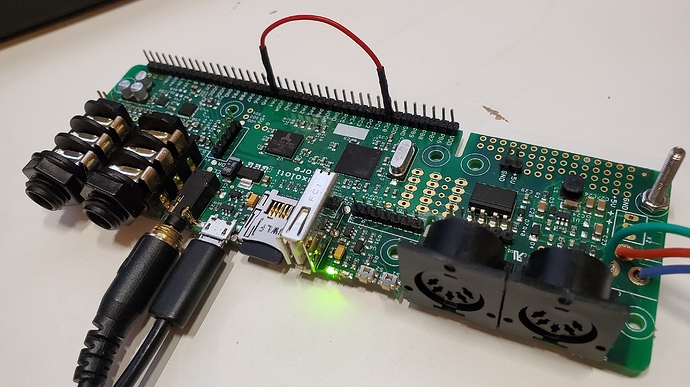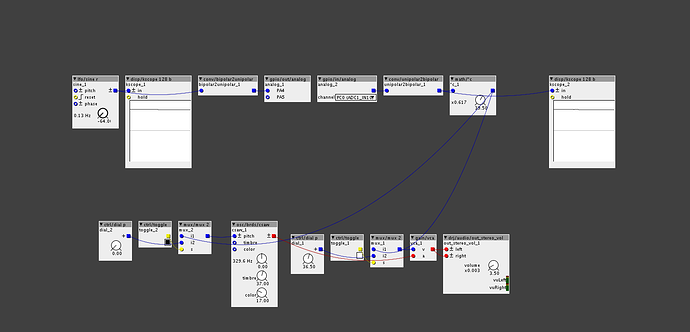I can't find anything online that is related to this, figured I would ask here first. In fact, as I'm typing this out I'm realizing that this is probably quite common in the eurorack format (something I'm unfamiliar with).
In an attempt to offload resources from the Axoloti, I had the idea to send LFOs and envelopes to the Axoloti's analog inputs from the microcontroller I've been using to control the Axoloti by MIDI. Since the ADC receives higher resolution than the 7 bit MIDI signals, is it possible to send information from the PWM out of a Teensy into the analog ins of the Axoloti?
If so, it means that I would have to make the Teensy the MIDI handler, so that the note messages are sent at the same time as the envelope. Alternately, I could use the Axo as a MIDI thru to send messages from the Axo MIDI inputs to the Teensy, then back out to the Axoloti, but I'm worried about latency, unless the latency would be negligible.
Does anybody have any experience doing something similar? These are all things that I can figure out by myself, but I figured I would ask here first in case it saves a few hours of trial and error! Thanks!



